Citizen Science
Adapted from TeachEngineering activity contributed by Kansas State University.
Summary
Middle school students learn that ordinary people like themselves can make meaningful contributions to science through the concept of “citizen science.” They review examples of ongoing citizen science projects, such as medical research, then explore Zooniverse, an interactive website that shows how research in areas from marine biology to astronomy leverage the power of the Internet to use the assistance of non-scientists to record and classify large amounts of data. To conclude, students form “engineering teams” to brainstorm local project ideas that could benefit from community help, then design conceptual interactive websites that could organize and support the projects.
Grade level: 6-8
Time: 90 minutes
Learning objectives
After completing this activity, students should be able to:
- Describe what a specific citizen science project monitors/researches, how it does that, and how it enables researchers to make more informed decisions.
- Explain the practical societal benefits that a specific project might have.
- List the fields of science and engineering involved in a specific project and explain how each group contributes to the project.
- Explain the role of citizens in a specific citizen science project.
- Describe several projects in their own community that could benefit from the help of citizen scientists.
Learning standards
Next Generation Science Standards
- Define the criteria and constraints of a design problem with sufficient precision to ensure a successful solution, taking into account relevant scientific principles and potential impacts on people and the natural environment that may limit possible solutions.
International Technology and Engineering Educators Association
- Design and use instruments to gather data.
- Use data collected to analyze and interpret trends in order to identify the positive and negative effects of a technology.
- Identify trends and monitor potential consequences of technological development
Engineering Connection
In this activity, students explore several citizen science projects to see how engineering can be used to make advances in scientific research. Like engineers, they analyze the design of one of the citizen science projects to first understand the need driving the project. Specifically they learn about the problem that needs to be solved, the basics of how that problem is solved, and how the project’s design could potentially be improved. Then they work in small groups to design citizen science projects of their own.
- computers with Internet access, preferably one per student
- blank paper
- colored pencils or markers, for website design
- Exploring a Zooniverse Project Worksheet, one per student
- Website Project Design Chart, one per student
To share with the entire class:
- Citizen Science with Zooniverse Presentation, Microsoft® PowerPoint® file
- computer with Internet access and projector to display the presentation slides, websites and video
Introduction/Motivation
Have you ever heard of “citizen science” or “Zooniverse”? (Listen to student ideas.)
Today we are going to talk about how anyone can help the scientific community tackle some of its biggest projects, and then we’re going to brainstorm some projects of our own.
Let’s get started by talking about citizen science and then we will explore the “Zooniverse.”
Background 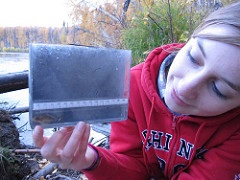
(Photo, right, from Alaska region Fish & Wildlife Service’s Chena River citizen science salmon project.)
The Seafloor Explorer project is an example of citizen science. It was designed by fisheries biologists, software engineers, and specialists from other related fields who worked together to come up with solutions to monitor the ecological balance of the sea life in the northeast continental shelf. The fisheries biologists described to the software engineers what they wanted and the software engineers created computer software solutions. In this case, the biologists want to monitor the ecological balance on the northeast continental to ensure that the population of the sea creatures stays in balance, which is important so that no species become endangered. It also helps the biologists study and learn more about sea creatures in general. The software engineers responded by designing a website where citizens classify the data, a database where the data is stored and queried, and an artificial intelligence system that learns the from citizens’ classifications in order to eventually classify the images itself. Citizen science from this project also helps the software engineers generally improve their design of artificial intelligence capabilities.
Before the Activity
- Conduct a number of the Zooniverse projects to learn how they work and gain some insight on a few specific examples, which will help you knowledgeably share facts and description about a few examples when introducing the class to Zooniverse, as well as be a resource for any technical problems students might encounter.
- Create a Zooniverse account. Some Zooniverse projects require an account while others do not. Preferably, direct students to projects that do not require accounts or let them create their own accounts. Or, log them in with your account. If you log them in with your account, the tutorial for any projects that you have completed will need to be restarted.
- Make copies of the Exploring a Zooniverse Project Worksheet (click HERE for PDF) and Website Project Design Chart, (click HERE for PDF) one each per student.
- Prepare to show students the Citizen Science with Zooniverse Presentation, which includes accessing websites and an online video.
With the Students
- (Begin at slide 1 of the presentation.) Present the Introduction/Motivation content to the class; see if students have any prior knowledge about citizen science and Zooniverse.
- (slide 2) Citizen science is scientific research that ordinary citizens can help with. Usually it involves people working with or being led by a team of scientists, engineers and/or other researchers with varied backgrounds and expertise. Many different types of citizen science are going on around the world at this very moment; maybe you have heard of some of them.
- (slide 3) One example of ongoing citizen science is medical research; that’s when researchers and doctors test out new medical treatments on sick people who volunteer to be test subjects. For example, trying a new way to fix a broken leg or participating in clinical trials for new cancer treatment.
- (slide 4) Another example of ongoing citizen science is medication testing; that’s when people are paid to test medications for medical conditions such as high cholesterol or heartburn. Have you seen drug advertisements on TV or in magazines and noticed the long list of warnings and side-effects? Those side-effects are discovered by this testing.
- (slide 5) Psychologists study peoples’ minds. During their research, they see how people behave in certain situations and how different conditions and stimuli influence their brains. For example, the MRI machine shown on this slide is used to conduct research because it shows people’s brain activity in response to how they are thinking and feeling in response to certain stimuli.
- (slide 6) Another example is the use of people’s personal computers to help with complex scientific calculations, such as SETI @ home, which can be downloaded on almost any computer to process data when your computer is not being used. You do not need to do anything except download and set up the program on your computer. SETI stands for Search for Extra-Terrestrial Intelligence. How does it work? The Arecibo Radio Telescope in Puerto Rico, shown on the slide, which is the largest dish antenna in the world, captures radio waves from outer space on the feed antenna suspended above it on cables and examines them for signs of intelligent life. How many of you have a radio in your family’s car? This is the same idea, except SETI listens to radio signals from distant space instead of from nearby radio stations. Right now, all the radio signals that have been found seem to be unintelligent noise, like the static noise on the radio when no station is dialed in. However, more radio signals exist than can possibly be examined by scientists, which is why citizen scientists can volunteer their computers to help examine the radio data.
- (slide 7) Another very common type of citizen science is the classification of data that needs humans to look at it because it cannot be deciphered by machines. That’s where Zooniverse comes in. Let’s look at the first Zooniverse project, Galaxy Zoo, and do one classification together. As a class, conduct the interactive Galaxy Zoo activity by following these steps:
- Click the Galaxy Zoo link on the slide to go to the Zooniverse website, at https://www.zooniverse.org/project/hubble.
- Once there, read the introduction: We need your help to classify the Hubble Space Telescope’s hundreds of thousands of galaxy images according to their shapes—a task at which your brain is better than even the most advanced computer.
- Then click the “Take part” button (goes to http://www.galaxyzoo.org/) and then click the “Begin Classifying” button.
- When an image of a galaxy appears, ask students for advice on how to classify it.
- Click on the “Examples” button to show students how to use the “Help” feature to learn more about how to classify the different types of galaxies.
- Explain that multiple people classify each of galaxy, so if a mistake is made in classification it is not a problem and will eventually get corrected or figured out by consensus.
- Get agreement or majority vote from students on how to classify the galaxy.
- Get input from students at each step in order to answer all the questions about classifying the galaxy until its classification is complete.
- Once a galaxy has been successfully classified, congratulate students on having made a small, but meaningful contribution to science.
- (slides 8-9) Now that students have first-hand experience with how citizen science works, give them some background on Zooniverse, its history and project types. Show them a 1:28-minute video that recaps how Galaxy Zoo harnessed the brain power of 250,000 volunteers to classify the shapes of hundreds of thousands of galaxies captured by the Hubble Space Telescope, at https://www.youtube.com/watch?v=-T9wizyDV8c. Zooniverse’s science and laboratory projects include a range of topic categories: space, climate, humanities, nature and biology. Look at the list of ~20 Zooniverse projects at https://www.zooniverse.org/projects#all.
- (slide 10) Explain the activity steps listed on the slide: get a worksheet, go to the Zooniverse website, pick a project and explore it, answer the worksheet questions, use reasoned inference as necessary.
- (slide 11) Give students some research tips by going to the Zooniverse website at https://www.zooniverse.org/ and scrolling through the main page, showing the different categories of projects, and then clicking on the Galaxy Zoo project. On the Galaxy Zoo project website, point out the links to the various website sections (story, science, discuss) and their sub-pages, and explain that from pages like this on their projects’ websites, they will find information to help them answer the worksheet questions.
- (slide 12) Address any student questions before getting started. As needed, help students navigate to the Zooniverse website and its list of projects.
- (slide 13) Hand out the worksheets and direct students to get started, working individually or in pairs (or larger groups, depending on computer availability). Leave slide 10 on the projector screen so that students can refer to it as a reminder of what they should be doing.
- (slide 14) After 25 minutes, have students share their observations, thoughts, experiences and findings, as well as any other information they recorded on their worksheets.
- Ask students to reflect upon the citizen science project they explored and share with the class a way to improve the project. This is something engineers think about doing a lot—how to make something better. As an example, one possible design improvement for the Seafloor Explorer project might be to add zoom-in functionality for when people are classifying the images because some of the sea life is small and hard to see. This improvement would make the project easier to use, thus attracting more people to participate.
- Once students have finished exploring the Zooniverse site, point out that the projects on the website are all large-scale and of national or international interest. Invite a discussion of different types of projects like Zooniverse that could be implemented more locally, in their own community. Ask: What are some projects that could be done in your community that citizens could help with?
- Start brainstorming with students, writing their suggestions on the classroom board. It may be hard at first, after seeing such large-scale projects, but try to get them thinking about hands-on assistance or awareness. What about a website devoted to environmental engineering issues (ecosystem, soil, air or water pollution)? Cleaning up parks? Roads? Pothole reporting? A website for reporting environmental hazards? Downed trees or clogged street drains after storms? Continue brainstorming ways that citizens might contribute to community-wide problems via websites or social media.
- Once a half-dozen or so ideas have been suggested, divide the class into groups of two to four students each. Direct groups to each design a website that addresses its local project topic (either chosen or assigned). Review the steps of the engineering design process with students and emphasize that they focus on brainstorming ideas and the initial design steps of the process (more than the implementing and testing of their designs). Hand out the design chart and give groups 20 minutes to come up with overall website designs.
- Next, have students use colored pencils or markers and blank paper to sketch their website designs. Make sure the graphical work generally follows their design charts and that a main page and sub-pages are designed in such a way that the information is clear, easy to use and has some way for community members to contribute. Provide ~25 minutes for this portion of the activity.
- Conclude by having teams present their projects and website designs to the class, as described in the Assessment section.
Activity extension
Have your class participate in a citizen science project, such as volunteering to track rain and snowfall for the National Oceanic and Atmospheric Administration.
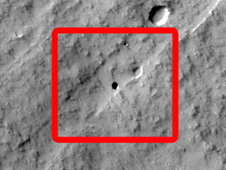 Have students research and write a brief report on a citizen science project, such as the California 7th graders who found a new cave on Mars from examining NASA photos in 2010.
Have students research and write a brief report on a citizen science project, such as the California 7th graders who found a new cave on Mars from examining NASA photos in 2010.
Attachments
Troubleshooting Tips
If a Zooniverse project does not work properly, switch to a different web browser.
Additional Resources
The Awesome Power of Citizen Science. SciShow runs through some of the contributions citizen scientists have made to classifying stars and analyzing folding games. [YouTube 9:28]
CitizenScience.gov The federal government’s official site to accelerate the use of crowdsourcing in research includes a database of federal citizen science projects and a toolkit for designing citizen science projects
CityLab: The case for citizen science on coastal waters. Article about projects in New York and Florida that involve students in monitoring the health of rivers and aquatic life.
ParkScan San Francisco provides a way for citizens to report overflowing trash cans, fallen tree limbs, broken playground equipment, and other issues to keep parks clean, safe, and fun. The website requires citizen observers to give their email addresses and it provides a tutorial, map and form to submit a description with photos.
“Citizen Science.” Scientific American article.
“How SETI@home works.” SETI@Home. University of California search for life in the universe.
National Oceanic and Atmospheric Administration (NOAA) Citizen Science Projects. Volunteer to analyze old weather data, measure Earth’s magnetic field with your smartphone, protect sea turtles or other citizen science project.
Upstate New York citizen scientists help detect and slash benzene air pollution. [EPA film. YouTube 3:12]
Zooniverse: Real Science Online. Citizen Science Alliance.
Supporting Program
Filed under: Class Activities, Grades 6-8, Grades 6-8, Lesson Plans | Comments Off on Citizen Science









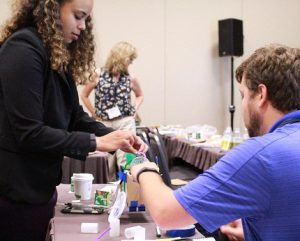
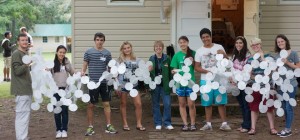
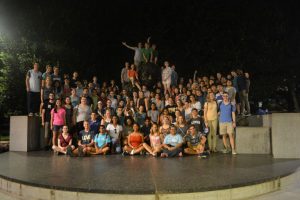
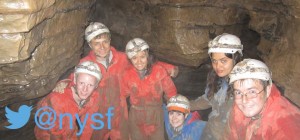 Applicants must:
Applicants must: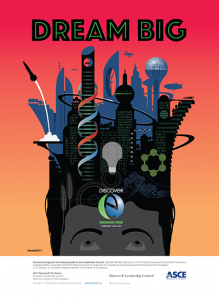 The week-long celebration is part of a broader effort to connect engineers and schools. Volunteers have coached
The week-long celebration is part of a broader effort to connect engineers and schools. Volunteers have coached 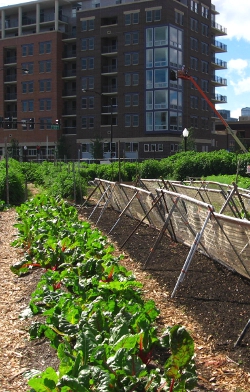

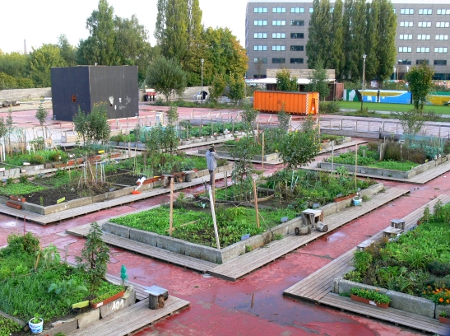


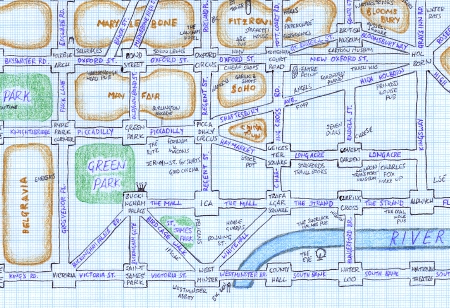
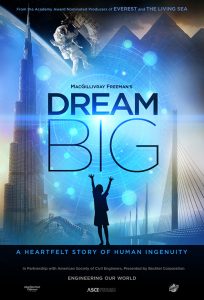 n by science and engineering. So we wanted to see if we could bring something new to that effort with an entertaining, visually spectacular film full of stirring human stories, one that energizes kids of all kinds, including girls and minorities, to think about engineering as something that might be an exciting thing to do with their lives and their way to make a mark on the world.”
n by science and engineering. So we wanted to see if we could bring something new to that effort with an entertaining, visually spectacular film full of stirring human stories, one that energizes kids of all kinds, including girls and minorities, to think about engineering as something that might be an exciting thing to do with their lives and their way to make a mark on the world.”